With high fertilizer prices, are you better off buying fertilizer or supplemental hay?
COLUMBIA, Mo. – Increases in fertilizer prices add to the cost of growing forage for grazing. This leads farmers to ask if they should buy hay or fertilizer, says University of Missouri Extension nutrient management specialist John Lory. Comparing the benefits of buying hay vs. applying fertilizer for better yields is complicated, but it is crucial to the bottom line, says Lory.
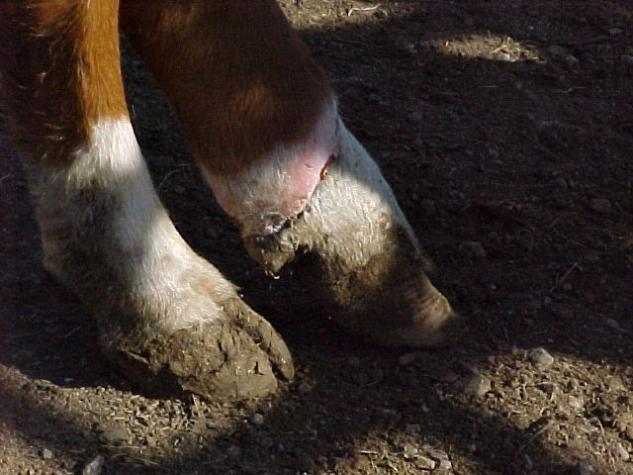
As temperatures drop, watch for fescue foot
Beef producers should watch for signs of fescue foot as cold weather sets in—limping, swelling, skin breaks, or cool lower legs are early warnings.
MU Extension agronomist offers tips to offset high nitrogen prices
GALENA, Mo. – If there was ever a time to do a soil test, this is it, says University of Missouri Extension agronomist Tim Schnakenberg. Rising fertilizer prices make it too expensive to guess on how to apply nutrients, says Schnakenberg. Soil tests can prevent buying and applying fertilizer where not needed. See the MU Extension publication “Soil Sampling Hayfields and Row Crops” at extension.missouri.edu/publications/g9217.
Grow now, graze later to reduce winter feed costs
Stockpile fescue pastures now to cut winter feed costs and improve cattle nutrition.
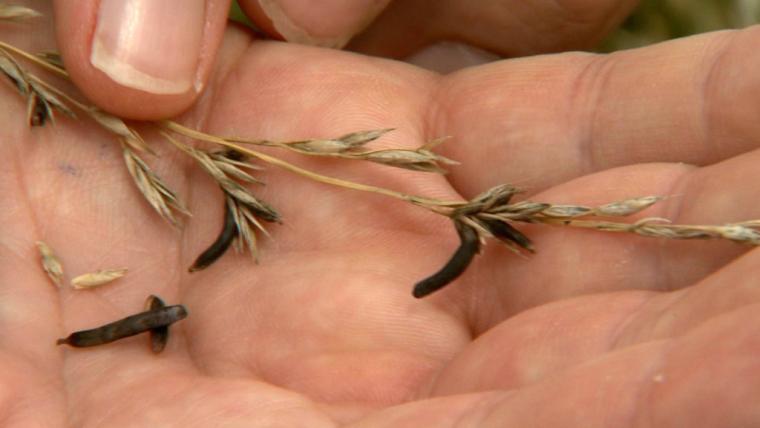
Be on lookout for ergot
COLUMBIA, Mo. – University of Missouri livestock and forage specialists are reporting ergot infestations that can cause major losses in livestock, said MU Extension state forage specialist Craig Roberts.
Rising feed prices call for cutting the fat in cow-calf operations
COLUMBIA, Mo. – University of Missouri Extension beef nutritionist Eric Bailey says beef producers can offset rising feed prices with changes in their operations. “It’s time to literally cut the fat from cow-calf operations,” says Bailey. Rising corn and soybean commodity prices are making their way downstream to feed prices, putting a pinch on profits.
Legumes improve pastures, grazing and profits
STOCKTON, Mo.- Add legumes to grazing pastures to improve cattle performance and forage production, says University of Missouri Extension regional livestock specialist Patrick Davis. Frost-seed clovers and lespedeza now, Davis says. They grow well with cool-season grasses in Missouri and improve spring and summer pastures.
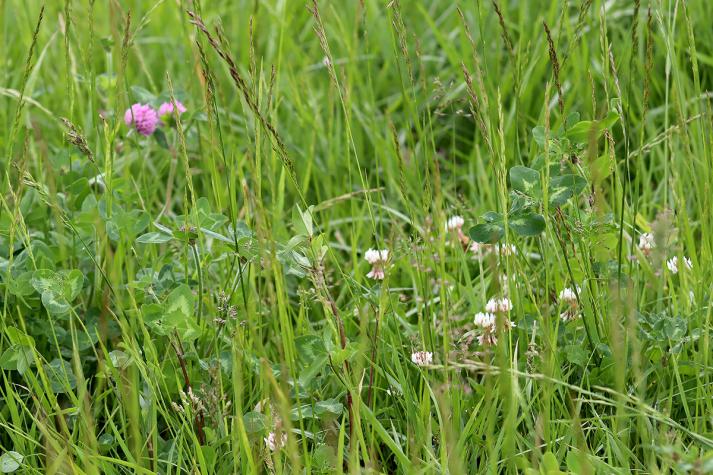
Frost seeding improves yield, quality
Frost seeding legumes boosts pasture yield and quality, reduces fertilizer needs, and supports livestock health and grazing profits.
Without forage test, hay by any other name is just hay
COLUMBIA, Mo. – Mature hay is hay. It may be brome hay, prairie hay or any other type of hay. But in the end, it’s just hay until it’s been tested. Forage tests tell the tale of whether hay is of good quality and nutrient-rich, says University of Missouri Extension livestock specialist Gene Schmitz.
Corn residue: cheap grazing for cattle
Grazing corn residue provides cattle with low-cost, nutritious forage while extending the grazing season and reducing feed costs.
Hay: Weigh, test and sample before you buy
MOUNT VERNON, Mo. – Weigh, test and sample hay before buying or selling, says University of Missouri Extension livestock specialist Eldon Cole.
Begin stockpiling fescue mid-August
COLUMBIA, Mo. – Start stockpiling fescue mid-August for healthier and more profitable cattle, says University of Missouri Extension forage specialist Craig Roberts.Stockpiling fescue saves time and money by reducing the need to feed hay.
Drought increases risk of forage poisoning
COLUMBIA, Mo. – Drought increases the chance of nitrate poisoning and prussic acid poisoning. High concentrations in plants and water can harm or even kill animals. High nitrate, mostly concentrated in grass stems, causes quick death, says University of Missouri Extension agronomist Jill Scheidt. Nitrate in the blood blocks oxygen uptake. Without oxygen, cows die quickly.
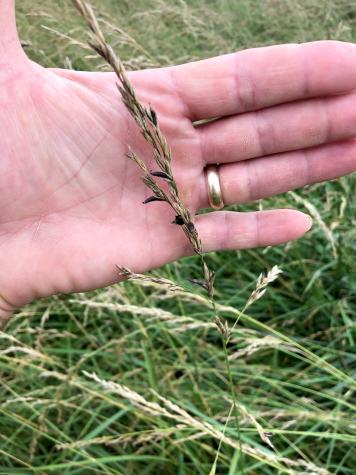
Conditions ripe for ergot this year
High heat and humidity after a wet spring increase ergot risk in tall fescue, posing dangers to livestock and humans.
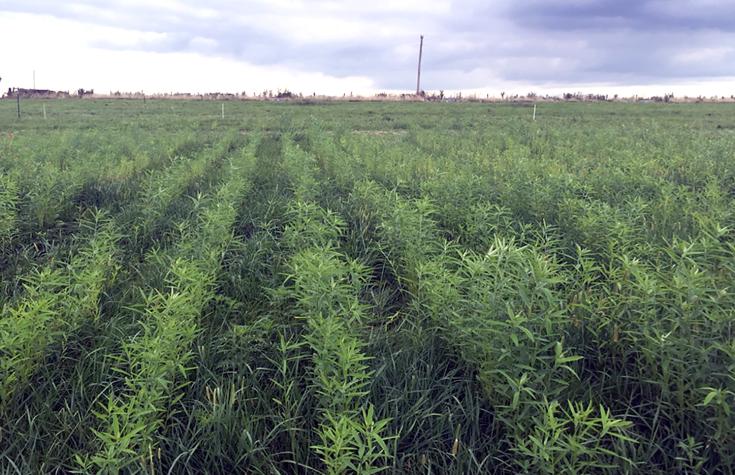
MU research: Sunn hemp benefits rotational grazing systems
Sunn hemp boosts rotational grazing by providing high-protein forage, improving soil health, and enhancing cattle gain while reducing summer slump.
Remove cool-season grass seed heads before they emerge
Manage tall fescue by removing seed heads early to boost forage quality and extend grazing and hay production.
MU Soil and Plant Testing Lab still open and serving Missouri agriculture
COLUMBIA, Mo. – For now, the University of Missouri Soil and Plant Testing Laboratory remains open. “We understand the essential role the lab plays in supporting Missouri's agricultural industry,” said Robert Kallenbach, MU Extension senior program director for agriculture and environment. “If we can continue to operate safely, the MU Soil Testing Laboratory in Columbia will continue to accept samples.”
COVID-19 fears plague cattle market
With cattle markets falling, livestock specialist Zac Erwin with MU Extension in Adair County discusses some feed options to hold cattle longer in this video on the Missouri Livestock Symposium Facebook page.
Seeding oats and clovers now improves spring grazing
STOCKTON, Mo. – Now is the time to seed oats and clovers to improve spring cattle grazing resources and reduce costs, says University of Missouri Extension livestock specialist Patrick Davis. “Feed is a major cow-calf operation cost,” says Davis. Oats and clovers are forages to seed now to improve spring grazing resources and help reduce supplemental feed costs.
Considerations for using cover crops on prevent plant acres and/or following flood situations
Learn how cover crops can protect soil, control weeds, and provide forage on prevent-plant or post-flood acres.
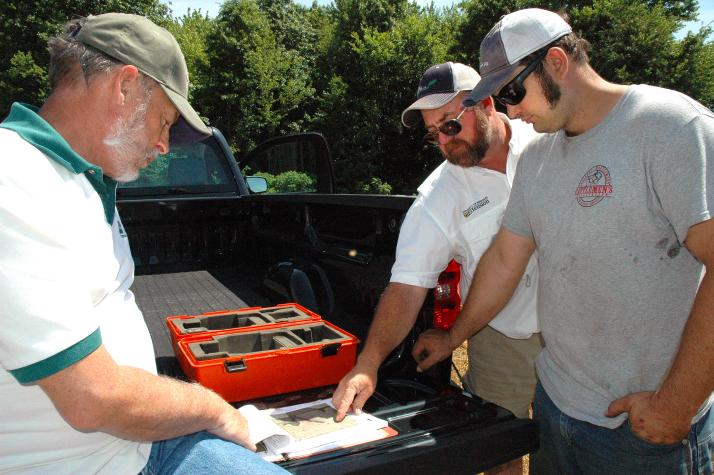
MU Extension, NRCS partner to help farmers convert cropland to pasture
Farmers get guidance and cost-share help to convert cropland to pasture using rotational grazing and conservation practices.
Cool-season pastures start regrowth with arrival of warm-weather rains
COLUMBIA, Mo. – Cool-season grasses such as fescue that dominate pasture grass in Missouri need warm weather to grow.The coldest April since 1907 set back forage for Missouri’s beef cow herds. Now, warm weather with rain creates forage for grazing and haying, said forage specialist Craig Roberts in a weekly University of Missouri Extension teleconference.New grass growth works best if an early crop of seed heads were clipped. That idea…
Prepare for grass tetany season
COLUMBIA, Mo. – A University of Missouri Extension beef nutrition specialist counsels farmers to prepare for grass tetany season in March.Grass tetany can result from a magnesium deficiency in spring calving herds consuming lush forages high in potassium and low in calcium and sodium, said Justin Sexten of the MU Extension Commercial Agriculture Program.
Increasing the winter survival rate of alfalfa
BLUE SPRINGS, Mo. - While the harvest of corn and soybean is underway, perennial crops such as alfalfa begin the cold-hardening process. Producers can increase the ability of plants to withstand cold temperatures by implementing several key strategies, said a University of Missouri Extension agronomy specialist. "First, a four- to six-week fall rest period is recommended for alfalfa stands," said Julie Abendroth.
Put your pasture lease agreement in writing
BLUE SPRINGS, Mo. - High commodity prices provide an opportunity for landowners to increase their income by converting pasture to crop production. This has created urgency among cattlemen to secure grazing land for their cattle and other livestock, said a University of Missouri Extension agriculture business specialist.
